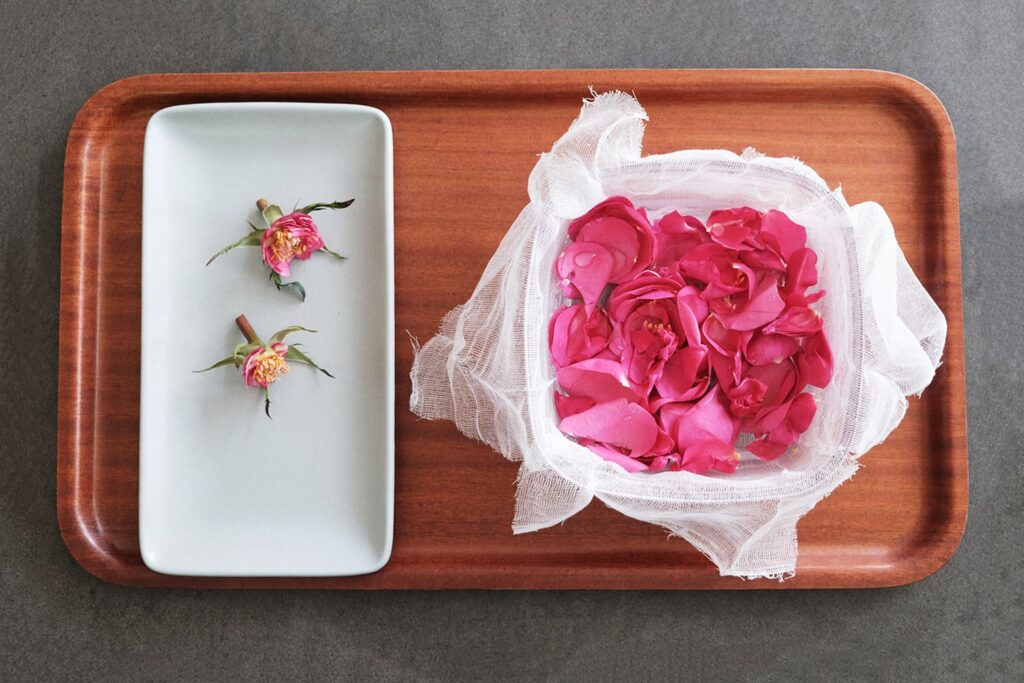Everyone loves the feeling of smelling great, but many commercial perfumes contain harsh chemicals and can be quite expensive. Making your own homemade perfume from orchid petals is a fun, eco-friendly, and affordable alternative. Plus, you get to create your own signature scent. In this article, we’ll guide you through the process step by step, offering tips and tricks to make your own unique fragrance.

Choosing Your Orchids
The first step to making your own perfume is selecting the right orchids. Orchids are a large and diverse family of flowers, with over 25,000 species and more than 100,000 hybrids. Their fragrances can range from sweet and fruity to spicy and musky. To find the perfect scent for your perfume, you may want to visit a local botanical garden or nursery where you can smell different orchids in person. Some popular fragrant orchid varieties include:
- Cattleya: Known for its large, showy blooms and sweet, floral scent.
- Dendrobium: Offers a wide range of scents, from fruity to spicy.
- Oncidium: Also known as the “dancing lady” orchid, these flowers have a delicate, sweet fragrance.
- Vanda: A popular choice for perfumes, vandas have a strong, sweet scent that is often compared to jasmine or vanilla.
Once you’ve chosen your orchids, you’ll need to collect the petals. You can either pick the flowers yourself or purchase them from a florist. Just make sure they’re fresh and haven’t been treated with any chemicals.
Extracting the Scent
Now that you have your orchid petals, it’s time to extract their fragrance. There are several methods to choose from, but we’ll focus on the easiest and most accessible: the enfleurage method.
Enfleurage
Enfleurage is a traditional method of extracting fragrance from flowers using odorless fat, like coconut oil or shea butter. Here’s what you’ll need:
- Fresh orchid petals
- Coconut oil or shea butter (approximately 1 cup)
- A glass or ceramic dish with a flat bottom (9×13 inches works well)
- Parchment paper or wax paper
- A spatula or spoon
- A glass jar with a tight-fitting lid
Step 1: Prepare the Fat
Place the coconut oil or shea butter in the glass or ceramic dish. If it’s solid, you may need to gently warm it in the microwave or on the stovetop until it becomes soft but not liquid. Then, spread the fat evenly across the bottom of the dish using the spatula or spoon.
Step 2: Add the Petals
Arrange the orchid petals on top of the fat in a single layer, making sure they don’t overlap. Press the petals gently into the fat so that they make good contact.
Step 3: Wait
Cover the dish with parchment paper or wax paper, and let it sit at room temperature for 24 hours. The fat will absorb the fragrance from the orchid petals during this time.
Step 4: Change the Petals
After 24 hours, remove the old petals and replace them with fresh ones. Repeat this process for at least 3-4 days, or until the fat has absorbed enough fragrance to your liking. The more times you repeat this step, the stronger the scent will be.
Step 5: Strain the Fat
Once you’re satisfied with the fragrance, use the spatula or spoon to transfer the scented fat into a glass jar. Press the fat through a fine mesh strainer or cheesecloth to remove any remaining petals. Seal the jar with a tight-fitting lid and store it in a cool, dark place until you’re ready to use it.
Creating Your Perfume Base
Now that you have your fragrant orchid-infused fat, it’s time to turn it into a wearable perfume. To do this, you’ll need to create a base using the following ingredients:
- Orchid-infused fat
- Carrier oil (such as jojoba oil, sweet almond oil, or fractionated coconut oil)
- Beeswax or soy wax (optional, for solid perfume)
- Essential oils (optional, for added fragrance)
Step 1: Measure Your Ingredients
The ratio of orchid-infused fat to carrier oil will depend on the strength of the scent you desire. A good starting point is a 1:1 ratio, but you can adjust this to your preference. If you’re making a solid perfume, you’ll also need to add wax. A common ratio is 1 part wax to 2 parts oil (including both the orchid-infused fat and the carrier oil).
Step 2: Combine Your Ingredients
In a double boiler or a heat-safe bowl set over a pot of simmering water, gently heat the orchid-infused fat, carrier oil, and wax (if using) until everything is melted and combined. If you’d like to add additional fragrance, you can also mix in a few drops of essential oils at this stage.
Step 3: Test Your Perfume
Before you pour your perfume into its final container, testing the scent on your skin is a good idea. Allow a small amount of the mixture to cool and dab it on your wrist. Wait a few minutes for the scent to settle, then adjust the ingredients’ ratios if necessary.
Step 4: Pour and Cool
Once you’re happy with your perfume’s scent, carefully pour the mixture into a glass bottle or a tin if you’re making a solid perfume. Allow the perfume to cool completely and solidify if necessary.
Personalizing Your Fragrance
The beauty of making your own perfume is that you can customize it to suit your preferences. Here are a few ideas for personalizing your orchid-based fragrance:
- Blend with other floral scents: Consider adding essential oils like jasmine, rose, or ylang-ylang to complement the orchid fragrance.
- Add a touch of citrus: A few drops of lemon, orange, or bergamot essential oil can give your perfume a fresh, uplifting twist.
- Create a spicy or earthy base: For a more complex fragrance, try adding essential oils like sandalwood, patchouli, or clove.
Tips for Wearing and Storing Your Homemade Perfume
To get the most out of your homemade orchid perfume, keep these tips in mind:
- Apply your perfume to pulse points like your wrists, neck, and behind your ears. These areas generate more heat, which helps to diffuse the fragrance.
- If you’ve made a solid perfume, you can also rub a small amount on the ends of your hair for a subtle, all-day scent.
- Store your perfume in a cool, dark place away from direct sunlight to preserve its fragrance.
- Remember that natural perfumes may have a shorter shelf life than commercial products, so use them within 6 months to a year.
Frequently Asked Questions
Can I use other flowers besides orchids to make homemade perfume?
You can definitely use other flowers to create your own signature scent. Some popular options include roses, jasmine, lavender, and lilacs. Just make sure the flowers you choose are fresh, untreated, and have a strong fragrance. The process for extracting the scent and creating the perfume base will remain the same as described in the article.
Can I use alcohol as a base for my homemade perfume instead of oil?
Absolutely! Many commercial perfumes use alcohol as a base because it evaporates quickly, leaving the fragrance behind. To make an alcohol-based perfume, substitute the carrier oil with a high-proof alcohol like vodka or Everclear. You’ll also need to let the perfume age for at least a month in a cool, dark place to allow the scent to fully develop.
How can I make my homemade perfume last longer on my skin?
To help your homemade perfume last longer, try applying it to moisturized skin, as the lotion oils will help hold the scent. You can also layer your fragrance by using scented body lotion, shower gel, or soap made with the same essential oils as your perfume. Another tip is to spray or dab the perfume on your clothing or hair, which may hold the scent longer than your skin.
Can I make perfume without using enfleurage? Are there other methods?
There are other methods to extract the scent from flowers, such as steam distillation and solvent extraction. However, these methods require specialized equipment and can be more complicated to perform at home. The enfleurage method is recommended for beginners because it’s simple, effective, and doesn’t require any special tools.

About Author
Hannah Anderson is a passionate garden enthusiast with over a decade of experience. She has been sharing her knowledge and expertise on this website and her articles and tips have helped countless individuals create beautiful and thriving gardens. Whether you’re a seasoned green thumb or just starting out, Hannah’s practical advice and creative ideas will inspire and guide you on your gardening journey.
